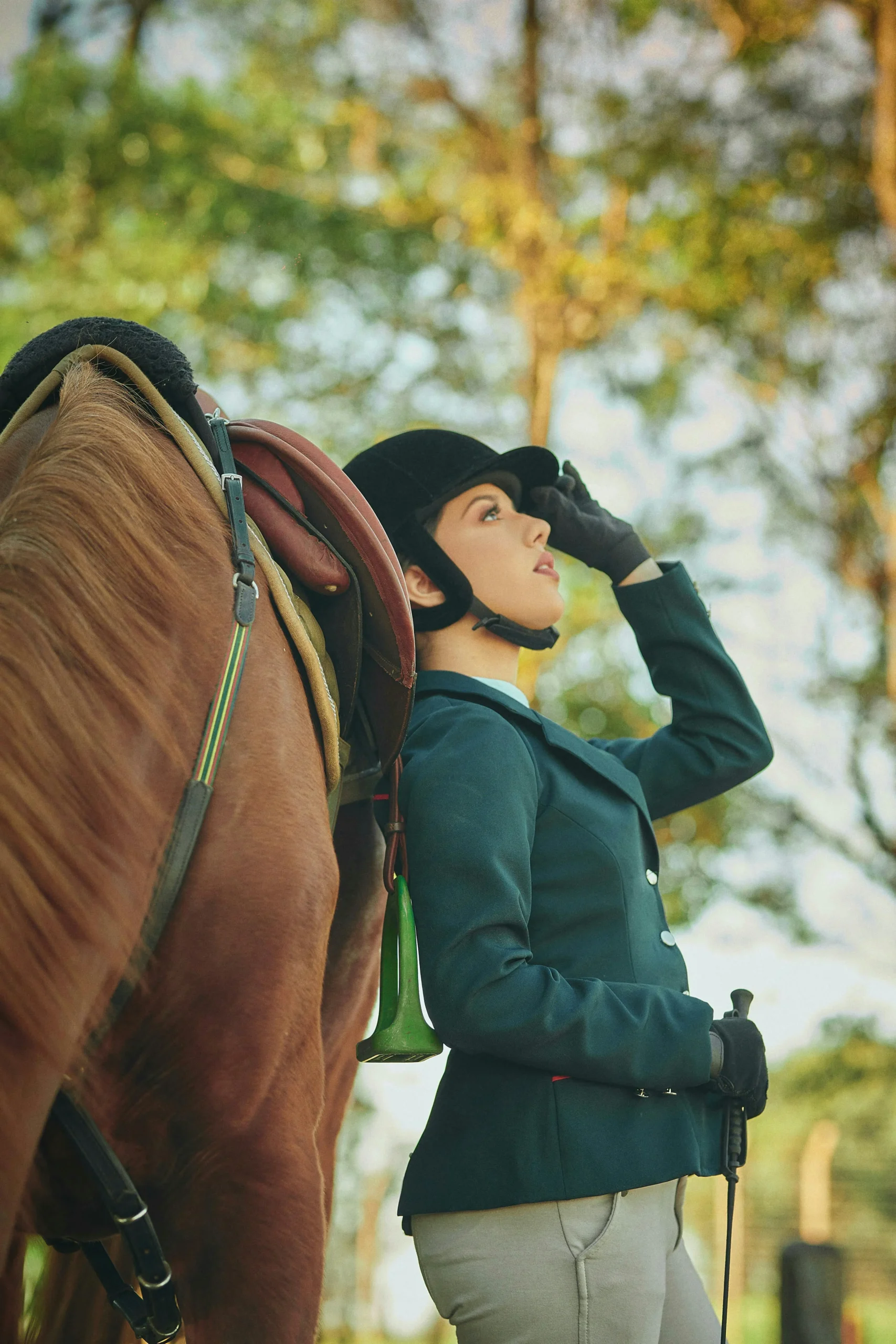Like all outdoor sports that involve an element of speed, horse riding demands a certain type of attire. To enjoy a wholesome riding experience, it’s important to choose equestrian wear with safety and comfort at the top of your mind.
In this guide, we’ll explore the essential components of your riding gear that not only cater for your wellbeing, but also help improve performance. Let’s dive in.
Table of Contents
What to Wear Horse Riding: 8 Essential Gear for Comfort and Safety
Riding Helmet
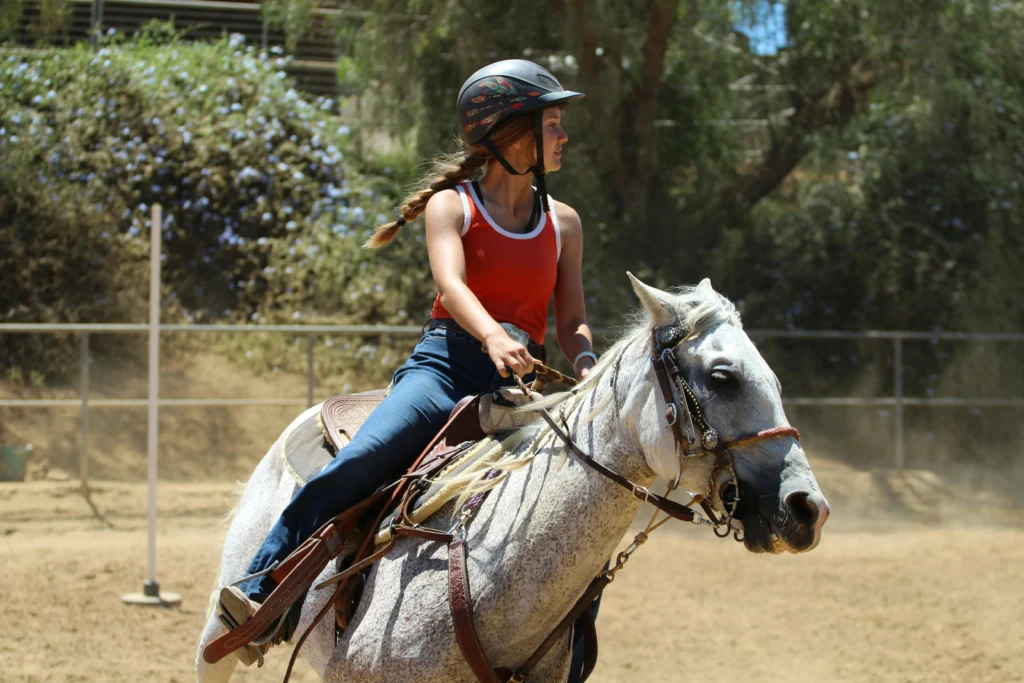
This is a must-have, whether you’re new in the saddle or a seasoned rider. Horse riding always carries an element of risk, no matter how well trained the horse is, so you need the protection of a quality helmet in case of a fall.
When picking a riding helmet ensure it fits well, is comfortable, and is approved for equestrian use. It helps a lot if the helmet is lightweight and breathable. Your helmet should complement the type of riding your involved in, whether you have ambitions to become a showjumper, or you do horse riding for recreation.
Horse Riding Gloves

Gloves form an indispensable part of your riding kit when taking up equestrian sports. Ideal for protecting your hands from cold, chafing and rope burn, riding gloves offer extra protection especially in adverse weather conditions.
To keep your hands dry during intense riding exercises, you will want to pick breathable gloves with moisture-wicking properties. Your gloves should also be close fitting without applying too much pressure.
Base layers

Whether riding in intense sunshine, or in cold weather conditions, selecting the right base layer can help keep your body temperature comfortable. The best base layers for horse riding are made of functional fabric that breathes and wicks moisture away from your skin, leaving your body cool. They are also capable of trapping air between your skin and the material, effectively insulating your body from cold.
When choosing base layers, go for clothing that frees your movement and protects you from the elements.
Sweat Shirt

Equestrian shirts come in handy when training or riding casually. Depending on the weather, they can be long or short sleeved, but should fit well to avoid getting tangled with other parts of your horse riding gear. For summer riding, choose a sweatshirt that’s quick drying, comfortable and breathable to keep your body cool and moisture-free.
In cold weather, choose a long sleeved sweatshirt that adds warmth to your body without too much bulk. You may need to layer with a riding jacket. Sweatshirts that come with a zip offer the advantage of being easy to take off without having to dismount, or having to remove your riding helmet.
Riding jacket

If you’re new to riding, you’re better off going for a coat that you won’t mind getting dirty. It should be durable enough to withstand wear and tear during the course of your equestrian hobby. A riding jacket that fits the bill is ideally lightweight and waterproof, with allowance for easy movement of your arms and shoulders, which is important for riding and tacking up activities.
If you’re a frequent rider, consider getting a specialist riding jacket in either a short or long style. It’s even better when designed with a rear riding vent that helps you sit neater over the saddle when riding.
Breeches/Jodhpurs
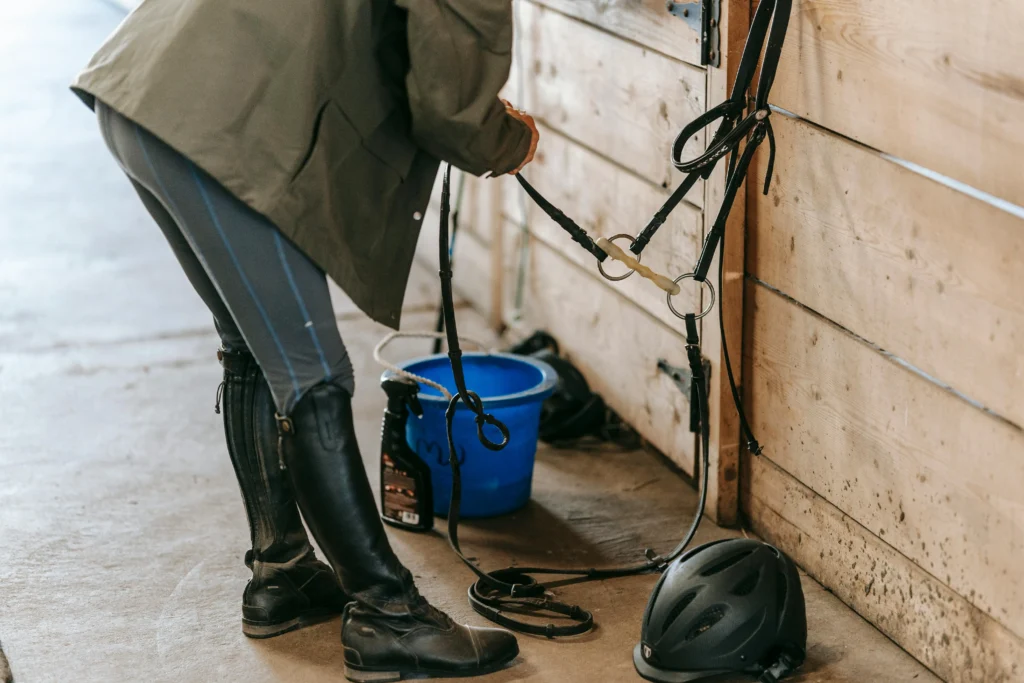
Compared to a pair of jeans or regular pants, wearing breeches or jodhpurs offers many benefits such as ease of movement on the horse’s back, and minimizing chafing. That’s because they’re usually made of a stretchy fabric that fits snugly to your body. They’re also designed specifically to protect your lower leg, providing comfort, protection and flexibility while in the saddle.
Breeches end just above the ankle and are designed for wearing with long boots or gaiters. Jodhpurs, on the other hand, stretch down to your ankles and are best worn with short boots. Jodhpurs are popular with children and inexperienced riders.
Riding Boots
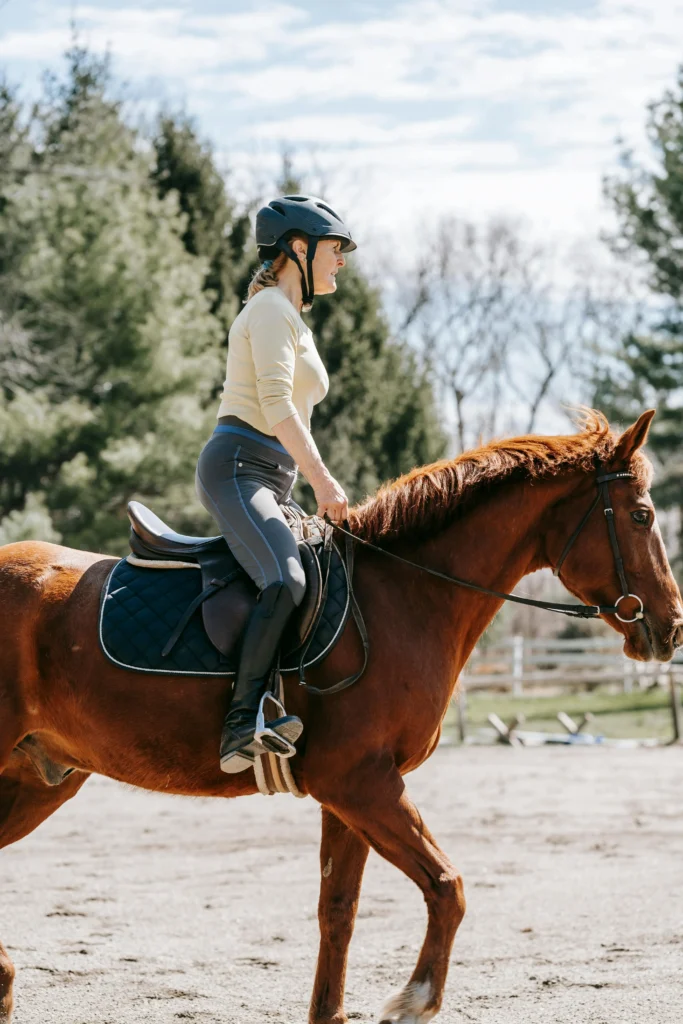
More than just a fashion statement in equestrian sports, riding boots are designed to protect your feet when riding and handling horses. They are especially helpful when mounting and dismounting as they prevent your feet from getting stuck in the stirrups.
You can opt for knee-high or ankle high boots depending on the type of activity you’re engaged in. Short boots are cheaper and often preferred by beginners and can be worn with gaiters. Long boots, by contrast, are preferred by show jumpers because of the extra leg and ankle support they offer, and more professional look. They’re also more expensive.
The best horse riding boots include safety features like non-slip soles (with the option of a small heel) to prevent your foot slipping through the stirrup iron. They also have steel-toe caps to protect your toes from getting stepped on by your horse.
Riding protectors/air jackets
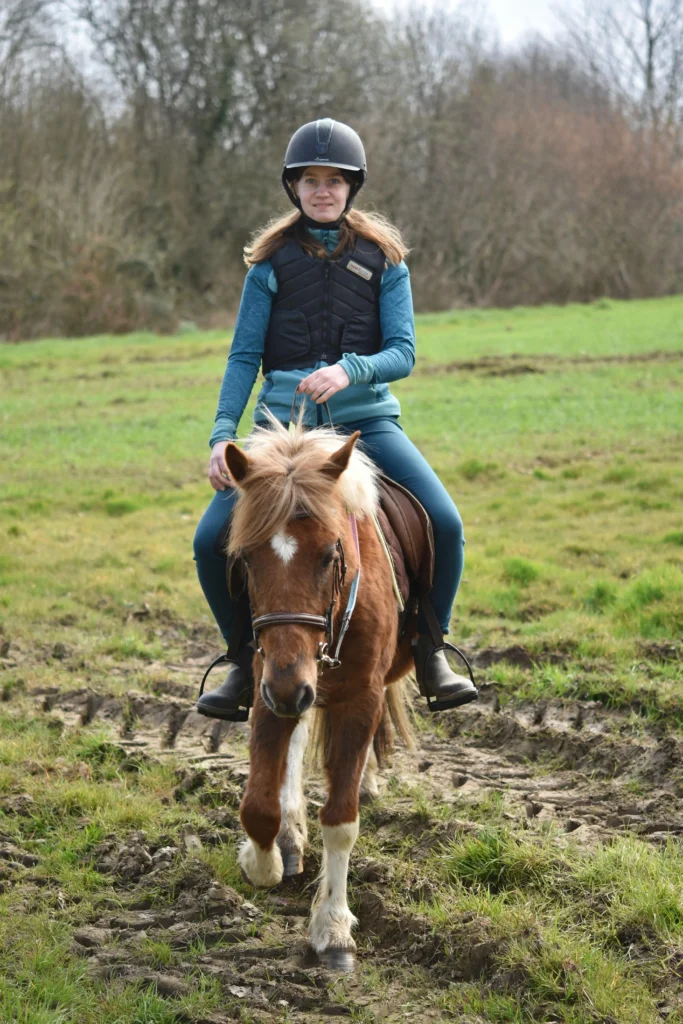
No matter your level as a rider, you need a body protector as part of your horse-riding kit. In the unfortunate event of a fall, a body protector or air jacket absorbs the shock and reduces the severity of impact, protecting your ribs, spine, and internal organs in the process. For maximum protection, ensure this equestrian attire is perfectly fitted when buying it.
Conclusion: What to Wear Horse Riding
As a first time rider, knowing what to wear can be a bit confusing. Hopefully this guide has shed some light on the do’s and don’ts of equestrian dressing and should serve you well for your next riding session.
In case of any questions or feedback feel free to contact us. We’re always happy to listen to your views.
Check our articles today and get ready to experience more Training & Riding Tips.
References

